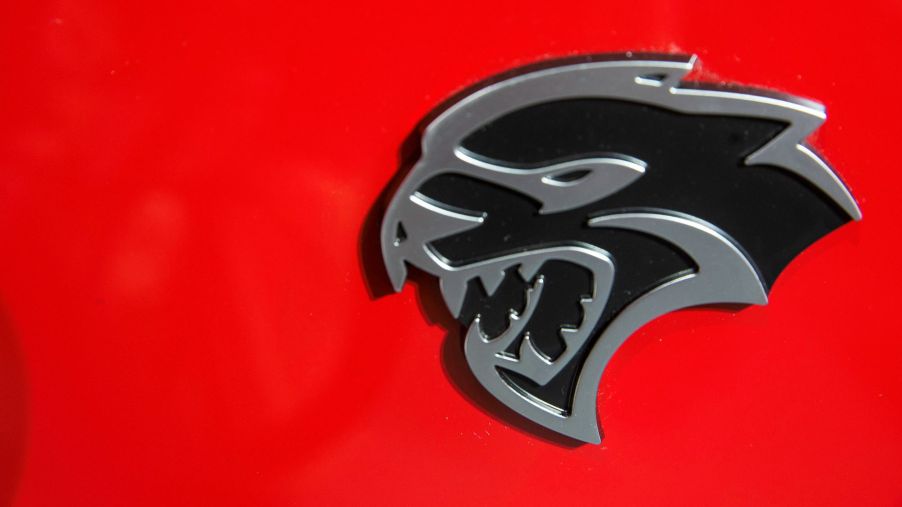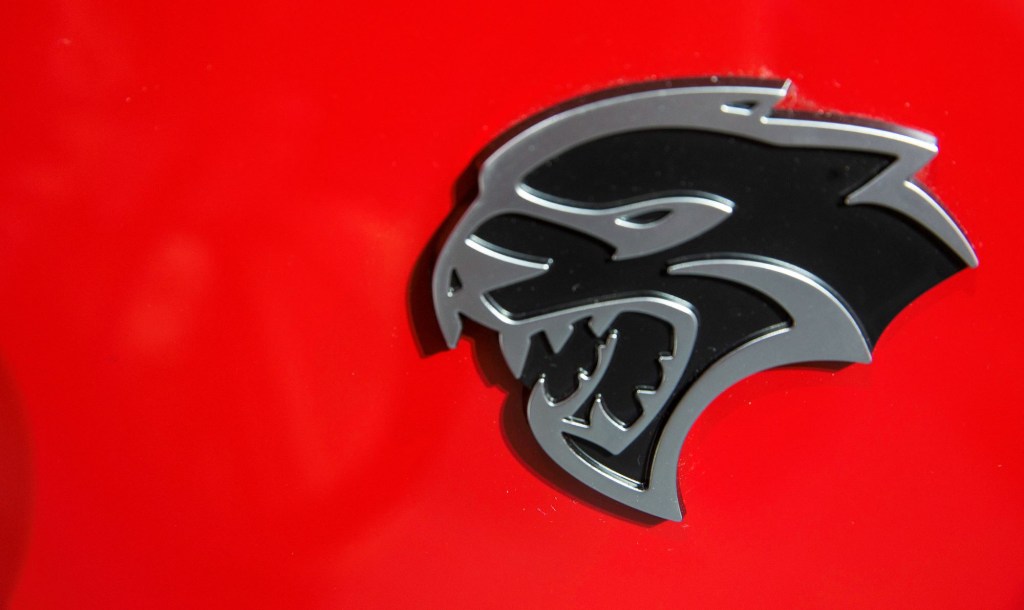
Dodge Challenger Hellcat: Everything You Need To Know
The Dodge Challenger Hellcat is well-known as one of the most powerful variations of the legendary Challenger. The original muscle car could be equipped with a powerful V8, but it wouldn’t get the modern Hellcat Hemi until 2015. It’s the biggest engine Dodge has made yet, capable of up to 840 hp.
Although the Hemi serves as its namesake, the Dodge Challenger Hellcat isn’t the only one with this iconic engine. The SRT Hellcat has two other trims ahead of it, not to mention the now-defunct Dodge SRT Demon. What are the subtle differences between Dodge Challenger models throughout the years leading up to the current Hellcat?
The Dodge Challenger SRT Hellcat versus Dodge Challenger SRT Demon

The Dodge Challenger Hellcat SRT version comes equipped with a supercharged Hemi V8 with 717 hp and 656 lb-ft of torque. It comes paired with an eight-speed automatic gearbox that utilizes a manual-shifting mode. According to Car and Driver, the Dodge SRT Hellcat handles curvy roads easily and without a second’s loss of power.
The SRT Hellcat is also available in a Widebody configuration, giving it some stylish flared fenders. Its added width also allows it to house a pair of optimized Pirelli racing tires. However, Car and Driver wasn’t a fan of the Widebody’s electronically power-assisted steering, which lacks feedback compared to the standard SRT Hellcat.
No matter which body style it has, the SRT Hellcat comes with some extra performance features. These include an adjustable Bilstein suspension, Brembo brakes, an open-air engine intake, and a track-focused differential.
Car and Driver praised the Dodge Challenger SRT Hellcat’s interior, now updated with a more intuitive control layout. The front passengers get to sit on leather seats with standard heating and ventilation. Although luxurious, Car and Driver still found some of the hard plastics a bit of an eyesore.
Even without the Widebody upgrade, the rear seat is still one of the roomiest you’ll find in this segment. It doesn’t have many safety features, but this Challenger is nicely equipped with smartphone integration and navigation.
Car and Driver also reviewed the Dodge Challenger SRT Demon, which was limited to just 3,000 units in the States. It’s the fastest production car ever made, capable of 840 hp with premium racing fuel. According to Motor Illustrated, the Demon can hit the 60 mph mark in a mere 2.1 seconds.
The Challenger SRT Demon also came with a trans brake for the transmission and adjustable dampers. Unlike the SRT Hellcat, it doesn’t come with any passenger seats, making it more nimble on the track. It also doesn’t have as many tech features, though these can still be had as options.
One standard bit of technology is a computer that shows you the real-time horsepower and torque rates. It also keeps a log of the Demon’s performance with new parts or changing weather conditions.
Although the SRT Demon is more powerful, Ourisman Automotive says that either one is an impressive vehicle to own. The SRT Hellcat still makes an outrageous amount of horsepower and is more accommodating for passengers.
V6 Challenger versus Hemi Challenger
The base Dodge Challenger comes with a hearty 303 hp V6 engine with an eight-speed automatic transmission. The GT model has the same motor, but drivers can also opt for a six-speed manual. The Challenger GT also comes with enhanced performance parts.
The V6 Challengers are still quite speedy and have enough features to prove their value. However, David Taylor Ellisville dealership says the SRT Hellcat is still the most powerful option. It has a top speed of 199 mph and can clear the quarter-mile mark in 11.2 seconds. SRT stands for “Street and Racing Technology,” so we wouldn’t expect anything less.
What is a Dodge Challenger Scat Pack?
According to The Drive, the Scat Pack campaign first appeared in the late 60s. While it started as just a performance package, some models today have their own dedicated Scat Pack trims. The Scat Pack logo’s bee mascot was also used to sell merchandise, creating a community around vehicles with this package.
The Dodge Challenger R/T Scat Pack doesn’t come with a supercharged Hellcat Hemi. Instead, its Hemi makes 485 hp and 475 lb-ft of torque. The R/T stands for “road and track,” making it just a performance trim of the regular Challenger.
Although not as extravagant as the Hellcat models, the R/T Scat Pack still has Brembo brakes and a track-tuned suspension. The included SRT drive modes allow you to optimize the Challenger’s performance for both sporty and daily drives.
Although it’s only available in RWD, its sticky tires still have considerable traction on paved roads. You can also outfit this Challenger with either drag radial or P Zero summer tires.
The interior still falls short of some rivals, but it has more features than a V6 Dodge Challenger. It has the same infotainment comforts as the SRT Hellcat, including a premium Alpine stereo system. The steering wheel and front seats also come with standard heating.
The R/T Scat Pack and its Widebody variant were three of the only trims available with the 50th Anniversary package. These models have special badging, gold wheel accents, and upgraded interior materials.
The 2022 Dodge Challenger R/T Scat Pack is also one of the cheaper ways to gain access to the V8. It starts at $41,070, and the Widebody trim will likely cost over $48,000. For comparison, the Challenger Hellcat can easily cost over $60,000. For added authenticity, you can also drop $495 for a bumblebee racing stripe.
Dodge Challenger 1969-1974 versus Dodge Challenger RT 1970
Auto Evolution showcases the Dodge Challenger’s first generation, which still had impressive specs at the time. Drivers could choose from a healthy variety of engines rated up to 375 hp, paired with a three-speed manual transmission. Options included power steering, front disc brakes, rear drum brakes, and a pistol-grip shifter.
Even with its long hood, the earliest Challenger models still had plenty of room for up to four passengers. The interior came with bolstered front seats, a clock, and a large instrument panel.
While impressive, the first Challenger was quickly overshadowed by the 1970 Dodge Challenger RT. The RT package was still available for the original Challenger, but this new model surprisingly lacked some of its features. This caused many consumers to gloss over this Challenger upon its release.
However, the 1970 Challenger RT was far superior from a mechanical standpoint. The standard engine made 335 hp, though the optional Hemi could make upwards of 425 hp. The best Challenger RTs got their power from the tri-carb Six Pack V8, capable of 390 hp and 490 lb-ft of torque. According to Old Cars Weekly, it could race to 60 mph in just 6.2 seconds.
This Challenger also swapped out the manual gearbox for a column-shifting automatic one. If drivers wanted the manual option, it was upgraded to a four-speed. The 1970 RT also got a new suspension, bigger brakes, and a better instrument cluster. It also came with the Challenger’s first shaker hood, which you can still get as optional equipment on today’s Scat Pack.
The 1970 Challenger RT also benefited from new tires, a longer wheelbase, iconic orange paint, and a more distinct exhaust note. Unfortunately, the Six Pack RT is one of the rarest models to find, with less than 800 models produced.
1972 Dodge Challenger versus Dodge Challenger 1980
According to Car Covers, the Dodge Challenger also struggled to move units in 1972. Engine options were still plentiful, but the most powerful was only a 5.7-liter V8 capable of 240 hp. Every engine had to use lead-free gasoline, improving efficiency but leading to reduced performance.
It also didn’t have any drastic exterior improvements, aside from the new egg-crate grille. However, the 1972 Challenger was the first one to offer power windows for its drivers. A few years later, Dodge would add seatbelt-ignition interlock for added security.
The Dodge Challenger disappeared in 1974 and returned for the 1978 model year. The engines still didn’t make as much horsepower as before, but they operated at a higher capacity and had balance-shifting technology. This lowered the vibration of the car, resulting in a smoother ride and improved straight-line acceleration.
However, the largest engine only put out 105 hp, reducing the once-legendary classic muscle car to a reserved cruiser. Despite this, the Challenger still managed to move as many as 15,000 units each year. Some 1980 Challenger models even had racing stripes on the side as a callback to the first-gen Scat Pack. It was removed from the lineup in 1983 and wouldn’t return with its former glory until the 2008 model year.
What is the Dodge Challenger’s price?
Cars goes over the differences of the 10 trims available for the 2022 model year. The Challenger SXT is the base model, starting at $29,295 for RWD and $32,295 for AWD. Models with the V6 engine are the only ones you can equip with AWD.
The Dodge Challenger GT FWD costs the same as an SXT AWD, equipped with the same 303-hp V6. Some of its components are optimized for added performance, including the brakes and steering wheel. The 2022 Dodge Challenger R/T starts at $35,995 and comes with a 372-hp V8. Unlike the previous two models, it comes standard with a six-speed manual transmission.
The R/T Scat Pack and its Widebody version cost a little over $5,000 more. However, they also come with more racing enhancements and interior technology. For 2022, the Dodge Challenger SRT Hellcat retails for $59,995, and the Widebody version will likely cost $6,000 extra.
Cars doesn’t have pricing information for the 2022 SRT Hellcat Redeye yet, but it retailed for $73,065 in 2021. It has a high-output version of the Hellcat Hemi, now producing 797 hp and 707 lb-ft of torque. You can also get the Hellcat Redeye Widebody, which retails for $79,465. Both Redeyes also comes with many of the same performance extras on the regular SRT Hellcat.
The Dodge Challenger SRT Super Stock is the most powerful pack, starting at $82,465 in 2021. It gains 10 extra horsepower over the Hellcat Redeye, keeping the same amount of torque. JD Power says it’s the most powerful muscle car today, reaching 60 mph in 3.25 seconds.
All Super Stock models come in the Widebody variation to house the standard drag radial tires. The Challenger Super Stock also has exclusive glossy wheels with a granite finish. It might not have all the power of the SRT Demon, but at least it’s not a limited edition model.
Obviously, a fully-loaded Super Stock isn’t going to fit everyone’s budget. If you want to relive the old glory days of the Dodge Challenger, the V6 models provide just enough power. However, the Dodge Challenger SRT Hellcat is the perfect example of the automaker’s Hemi technology that won’t completely bankrupt you.


